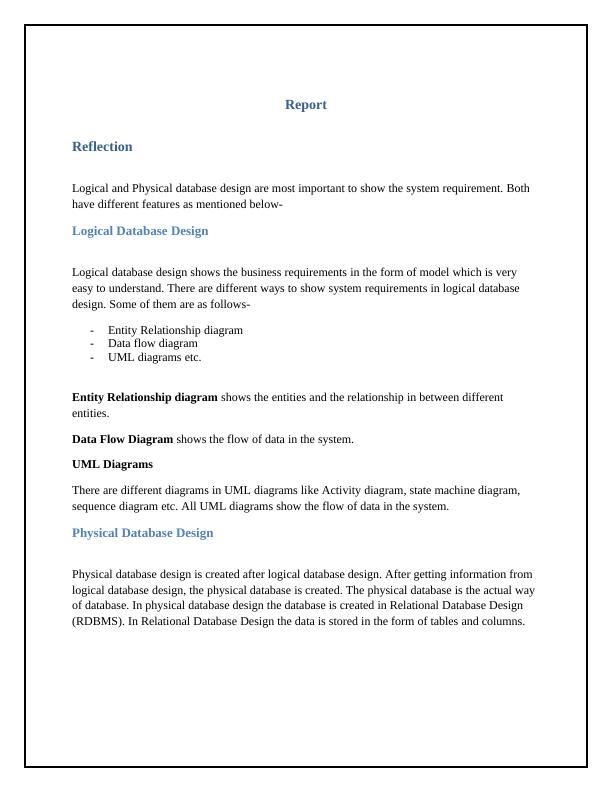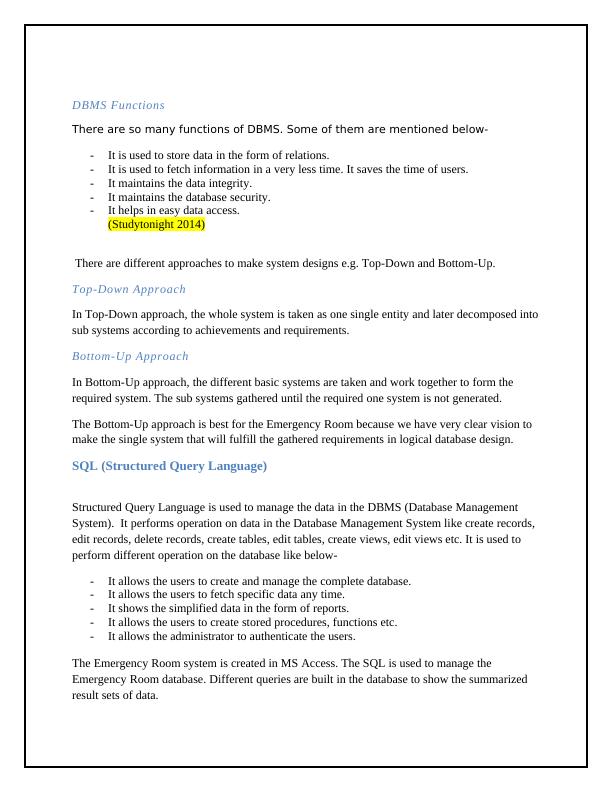Logical and Physical Database Design and DBMS Functions
Convert logical-level design to physical database using Microsoft Access software and create a technical report reflecting on the major learnings of the subject.
10 Pages1108 Words66 Views
Added on 2022-11-14
About This Document
This report explains the importance of logical and physical database design, DBMS functions, SQL, ER diagram, queries, business rules and assumptions. It also suggests future features that can be added to the database.
Logical and Physical Database Design and DBMS Functions
Convert logical-level design to physical database using Microsoft Access software and create a technical report reflecting on the major learnings of the subject.
Added on 2022-11-14
ShareRelated Documents
End of preview
Want to access all the pages? Upload your documents or become a member.
Data Modelling Management and Governance - Desklib
|31
|6642
|361
Database Systems for Toulis Construction: Diagrams, SQL Queries, Security Measures and Future Improvements
|23
|2197
|298
Data Modelling and Sql Language - Assignment
|18
|2256
|44
DBMS Principles and Applications
|8
|1379
|60
Data Modelling in Database Design
|8
|1351
|159
Database Concepts with SQL
|20
|3585
|242



